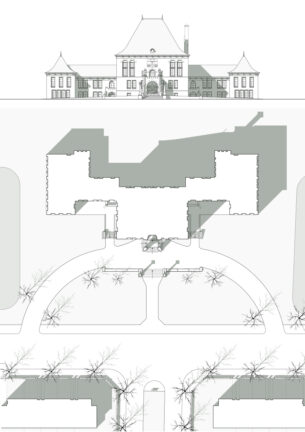Towards an Operative Traditionalism
Published in: De Architect, 2014
Architects in the Netherlands have been forced to reinvent their profession. Innovations are shooting in all directions: from the extreme servitude propagated by the BNA to the continuing avant-garde of the bottom-up movements. The profession lacks the self-confidence to contribute to an architectural culture with which to effectively influence the nameless major construction flows.

‘If we should now act as Venturi intended in his book Learning from Las Vegas, then we should also talk about the associated excesses and include the horrible commercial, everyday world. I am only convinced that this world does not yet prevail in Switzerland. It does exist, it is hideous, but it does not yet dominate our culture. At this moment, I can still ignore the IKEA and DIY world on the outskirts of Zurich and say that while the majority of building production is not beautiful, it is not the epitome of ugliness either. There is good, solid construction, with good materials chosen for their durability. Because this Mainstream is at a high level, we can afford to start from precisely that, frame it and improve it ever so slightly.’1
These words from Swiss-Czech architect Miroslav Šik are worth considering. Of particular importance is the recognition of the power of what he calls the Mainstream, the great nameless construction flows. Šik values these as the origins of his country’s architectural culture. This raises interesting questions for our country. Is it possible in the Netherlands to leave the Bijlmerboulevard, Hoog Catharijne and Alexandrium for what they are and start from the strength of Dutch architectural culture?
Building old-new
Šik, professor and talented polemicist, unabashedly opts for traditionalism. However, he does not leave it at rhetoric. With him, education, research, practice and publications are an interlinked whole. Traditionalism may be presented as a many-headed monster under which everything and nothing falls, but for Šik it is not a catch-all term. He succeeds in dissecting the concept, nuancing it and transferring it to today’s reality. Šik positions himself firmly within traditionalism and he does so by focusing on the social midground in which the lion’s share of architecture operates. In doing so, he uses programmatically coloured terms such as ‘mid-comfort’ and ‘old-new building’.
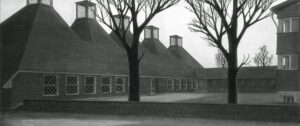
Šik assumes a historical continuity. He juxtaposes the old and the new, designates the social midfield as architecture’s main arena and puts something as simple as dwelling comfort at centre stage. In his teaching and his own designs, he explores moods and atmospheres, aspects of everyday building that were once subsumed under the search for character in the Netherlands.In doing so, Šik links up with the various reform movements in European architecture. According to him, these are much better placed to keep up with the modernisation of the housing issue and the construction industry. He turns away from experimental modernism. To make homes more hygienic and bright, the German Reformbewegung simply made the square cross windows slightly larger. According to Šik, the abstract modernist ribbon window did not last in the famous Siedlungen and succumbed to conventional windows and doors after numerous conversions.
Šik writes his programme in understandable language. For him, traditionalism is not a matter of approaching classical, Vitruvian ideals of beauty. Such a thing can only strand on the limitations of today’s building industry. Šik proposes analogies: similar solutions to new problems arising from contemporary building practice.
European discourse
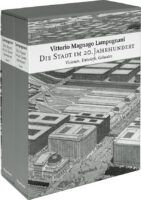
Euphoria about Dutch sugar modernism in recent decades has obscured the view of recent developments of design strategies in the countries around us. In any event, it is not without significance that Šik’s quote is of foreign origin. This is not an isolated case: studies by Vittorio Lampugnani, Martin Steinmann, Hans Kollhoff, Wolfgang Sonne, Adam Caruso, Stephen Bates, Jonathan Sergison and Lukas Imhoff – just to name a few – provide a palette of views that relate as critically to international neomodernism as to the traditionalism of the Krier brothers and the Prince of Wales – and certainly to the frenzied eclecticism of Michael Graves, the later Robert Venturi and FAT. Thus Lampugnani no longer suspends the history of urbanism exclusively to CIAM modernism, but includes the work of figures such as Pouillon and Perret. In his essays and designs, Caruso explores the potential of today’s building industry to create atmospheres and moods. Martin Steinmann, drawing on the housing construction of the Danish architect Kay Fisker, writes about ‘the tradition of practicality and the practicality of tradition’.2
According to Steinmann, alongside idealistic, form-oriented traditionalism, there exists an operative traditionalism that focuses on the working method. While the former relies on unchangeable values, the latter is constantly in flux.
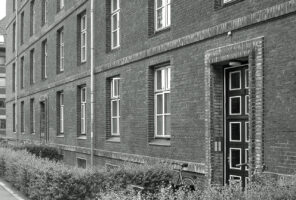
Steinmann illustrates the latter position with Fisker’s work that managed to reconcile twentieth-century mass housing and related building practice with historic Copenhagen. He positions Fisker’s matter-of-fact, operative traditionalism between the clichés of the conservative Danish peasant and the curious Danish sailor. Distrust of the new is as fruitless as rash innovation as an end in itself. However different all these authors may otherwise be, in this simple observation their views merge.
Even this sketchy overview suggests that, in England, Germany and Switzerland, the description and appreciation of the architectural tradition are not the exclusive domain of daily newspaper critics, captains of the local ‘cultural industry’ and architecturally interested one-day wonders. In these countries, there is a strong desire to formulate architecture within the boundaries of its own profession. Publications by the aforementioned have ample room for floor plans, technical sections and specialist architectural information. The thoroughness and seriousness alone are at odds with the jolliness and volatility that plague the Dutch architectural debate.
As long as architects succeed in bringing the merits of their profession into the limelight, that in itself is not a bad thing. Now that those merits are no longer self-evident and architectural culture is under considerable pressure, there is a dire need for architects to speak out publicly about the usefulness and necessity of their profession. Designers can no longer afford to be absent from architectural criticism, simply because otherwise the operative quality of their work will fade into the background. There is no one else who can bring out the effectiveness of design, fathom it and provide it with meaningful commentary.
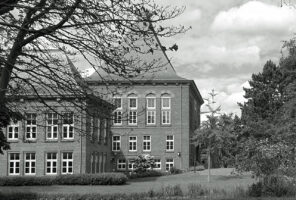
Dutch traditionalism
Historians have long ceased to understand Dutch post-war traditionalism as a homogeneous block ‘in opposition’ to modernism. For instance, it has been shown that the Delft School consisted of an academic line that was fundamentally distinct from Kropholler’s artisanal constructivism and Granpré-Molière’s artisanal regionalism.3 The former architect focused on the monumental tasks of public buildings with his heavy brickwork architecture, whereas the latter architect successfully focused on the everyday reality of housing construction and the development of the garden city idea.
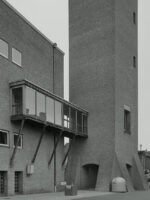
Academics like Zwiers, Friedhoff, Berghoef and Van der Steur, for their part, assumed functional floor plan development through strict formal systems. Their essentially materialless design method enabled Zwiers to develop industrial building systems in prefabricated concrete during the reconstruction period. In 1941, the exhibition Nederland bouwt in Baksteen (The Netherlands Build in Brick) revealed how much Rotterdam city architect Van der Steur was used to being versatile when it came to the tectonic principles of his brick buildings.
Here, too, several operatic design strategies within traditionalism converge. Van der Steur’s masterpiece, the Museum Boymans Van Beuningen, featured the latest technical gadgets, but possessed a monumentality that stemmed from the expressive possibilities of brick. This dovetailed with the Rotterdam City ideal of the interwar period and urban urban planner Witteveen’s material city. This monumentality had to be acceptable to both the then cultural elite and the Rotterdammer for whom the museum was intended.
Echo pit of extremes
Unfortunately, middle positions are rarely formulated radically in the Netherlands. For that reason, it is not difficult to portray the nameless major construction flows as a field of negotiation and compromise. For those who want to listen to the architectural debate in this way, is merely an echo pit in which the strident opinions of radical and extreme voices resonate and slowly fade out because the middle of architecture has no voice.
This audio play at the edge of the echo pit, where apart from the extreme professionals, the well rigged cultural system is also set, is strongly introspective. The audio play is staged with its back to the needs of the moment and the demands of current tasks. There is no longer a politician, investor or project developer who contributes to this play or even follows it from a distance. In these circles, people read the FD. For them, the architecture magazines are at best a source of entertainment or worse, of inspiration.
The great distance from everyday building practice to the world of architecture’s ideas is problematic. Between publicity and everyday practice, the voice of the designing architect is missing. The state of Dutch architecture is undoubtedly a consequence of external economic circumstances, it does not alter the fact that the design world itself is also in crisis. It is completely unclear which values matter, which knowledge and skills are valid, which strategies are effective and desirable, and how young architects should be educated.
Fortunately, there is broad thinking about renewing the design profession. That thinking is currently shooting in all directions. For 25 years, the conceptualism of Dutch sugar modernism was able to satisfy the desires of the national ‘captains of cultural industry’. However, it is a fallacy to assume that, for example, recent bottom-up thinking can be formulated in the same extremist terms or brought to attention through the same cultural institutions as sugar modernism. Bottom-up architecture is the rule rather than the exception all over the world, nurturing its comprehensibility and operational capacity. Problems cannot be solved by using the same institutions that created them. It is therefore unlikely that the conceptual architecture of yesteryear still provides much support in the current situation. Sober professionalism stands a much better chance.
Towards the operative
So today it is about concrete answers to concrete problems. If architecture wants to regain some of its credibility, it must make its own merits clear. This can only be done by putting forward the operative potential of design and by making the merits (or added value) of architecture clear. In doing so, one should not hide the fact that design proposals must be acceptable and pragmatically reasoned. Reason and the nuance of the mid-position can no longer be confused with silence. That reason, therefore, cannot exist without a theoretical framework. The midfield of building production is not an inevitability but must be an independent landmark. It is untenable to approach social and architectural traditions and new modes of production with blemish fear. Serious and excited interest is in order.
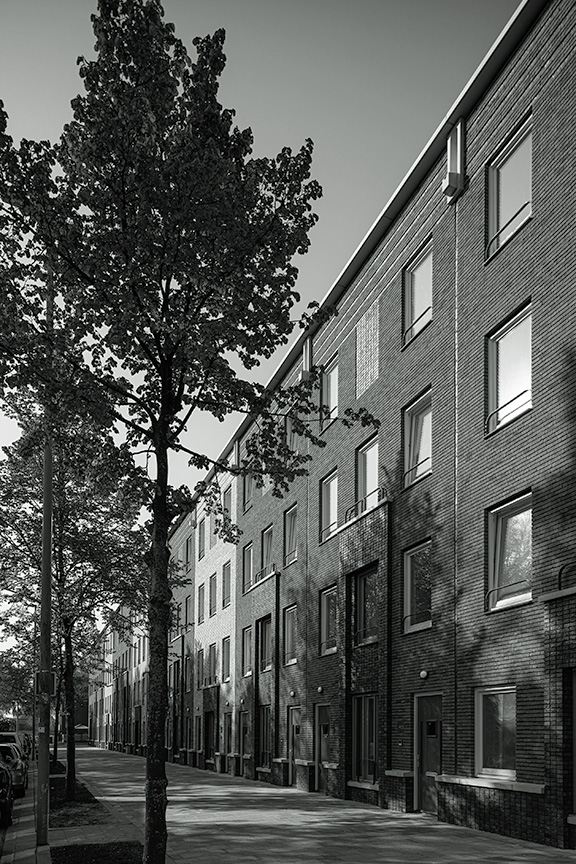
Could there be such a thing as a cautious approach to the sustainability operation ahead, where the historical quality of architecture represents not a burden but a value? How does an architect today contribute to processes in which he takes a great distance from actual production on the building site? How do the desires of empowered consumers come to fruition as market thinking in real estate development stagnates until further notice? An operative architecture that is mindful of its tradition itself possesses a creditable history. It possesses a theoretical foundation that can be further developed. An operative traditionalism that opens up to social and physical reality has the future.
Notes
1 Heinz Wirtz (ed.), Miroslav Šik, Architektur 1988-2012, Quart Verlag, Luzern 2012, p. 11
2 Martin Steinmann, Die Tradition der Sachlichkeit und die Sachlichkeit der Tradition, in: Martin Steinmann, Forme forte, Ecrits/Schriften 1972-2002, Birkhäuser, Basel, Boston, Berlin 2003, p. 49
3 J.P. Baeten, De groep Friedhoff en de Delftse School, thesis Kunsthistorisch Instituut, Rijksuniversiteit Leiden 1987
